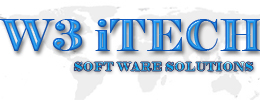
CMS (Content Management System)In the context of a Web site a CMS is a collection of tools designed to allow the creation, modification organisation and removal of information from a Web site. It is common for a CMS to require users to have no knowledge of HTML in order to create new Web pages. A content management system (CMS) such as a document management system (DMS) is a computer application used to manage work flow needed to collaboratively create, edit, review, index, search, publish and archive various kinds of digital media and electronic text. CMSs are frequently used for storing, controlling, versioning, and publishing industry-specific documentation such as news articles, operators' manuals, technical manuals, sales guides, and marketing brochures. The content managed may include computer files, image media, audio files, video files, electronic documents, and Web content. These concepts represent integrated and interdependent layers. There are various nomenclatures known in this area: Web Content Management, Digital Asset Management, Digital Records Management, Electronic Content Management and so on. The bottom line for these systems is managing content and publishing, with a workflow if required. Web content management systemA web-content-management system (WCMS or Web CMS) is content management system (CMS) software, usually implemented as a Web application, for creating and managing HTML content. It is used to manage and control a large, dynamic collection of Web material (HTML documents and their associated images). A WCMS facilitates content creation, content control, editing, and many essential Web maintenance functions. Usually the software provides authoring (and other) tools designed to allow users with little or no knowledge of programming languages or markup languages to create and manage content with relative ease. Most systems use a database to store content, metadata, and/or artifacts that might be needed by the system. Content is frequently, but not universally, stored as XML, to facilitate reuse and enable flexible presentation options. A presentation layer displays the content to regular Web-site visitors based on a set of templates. Administration is typically done through browser-based interfaces. Unlike Web-site builders like Microsoft FrontPage or Adobe Dreamweaver, a WCMS allows non-technical users to make changes to an existing website with little or no training. A WCMS typically requires an experienced coder to set up and add features, but is primarily a Web-site maintenance tool for non-technical administrators. |
 |

